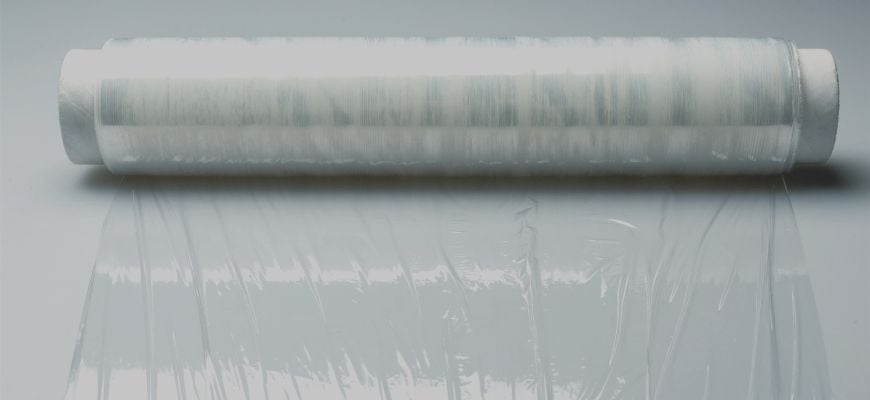
Creating your own Rocket Industrial personal account has many benefits:

Stretch film is used in a variety of industries and it is important to choose the best one for each specific application. The two different types of stretch film are blown and cast, with the primary difference between the two being the process in which each is created and manufactured. These differences also impact the usability and price of the film.
Creation of Cast Stretch Wrap
A cast extrusion process is used to manufacture cast stretch film. Beads of resin are fed into a heated barrel and forced through a narrow slotted die, creating a 'sheet' of film. The film is then fed along a rolling path that has been cooled, solidifying the film. This process is faster and costs less than the blown extrusion method as more is produced per man-hour. Machine stretch wrap is commonly produced by this method.
Creation of Blown Stretch Wrap
The blown film extrusion process to create blown stretch film is similar to the cast extrusion process. Beads of resin are fed through a heated machine with a circular die, then forced through the die and blown out vertically into a bubble. As this formed bubble finishes the process of being transformed into rolls of stretch film, it is cooled by the surrounding air. This type of film generally costs more to make because the output per hour is less than with cast films. Hand stretch wrap is often manufactured using this process and typically has higher holding power and puncture resistance.
Which Type of Stretch Wrap is Better?
Choosing the best stretch film is dependent on the wrapping situation. Load retention, film memory, film yield, puncture resistance, cling, visual clarity, and unwind noise are the main factors that need to be assessed before deciding which film is best suited for your situation.
7-Point Comparison Chart
| Cast Stretch Film | Blown Stretch Film | |
|---|---|---|
| Load Retention |
Stretches easily, which can cause shifting |
More holding power, won't re-stretch once applied |
| Film Memory |
Minimal shrinking back to the original state after stretching |
Higher shrinking back to original size after stretching |
| Film Yield |
More stretch to wrap more pallets with less film |
Less stretch requires more film to wrap pallets |
| Puncture Resistance |
Standard tearing can occur with high-stress |
Greater resistance to breaking |
| Cling of the Film |
2-sided cling allows pallets to stick together |
1-sided cling for higher load retention |
| Visual Clarity |
Perfectly clear, easy to scan and read, higher gloss creates reflections |
Not crystal clear, difficult to scan and read, low gloss reduces reflections |
| Noise of Unwind |
Very quiet when releasing from the roll |
Loud when releasing from the roll |
Stretch wrap comes in a variety of widths, lengths, and gauges to secure pallets. Contact our packaging specialists for help choosing the best one for your application.